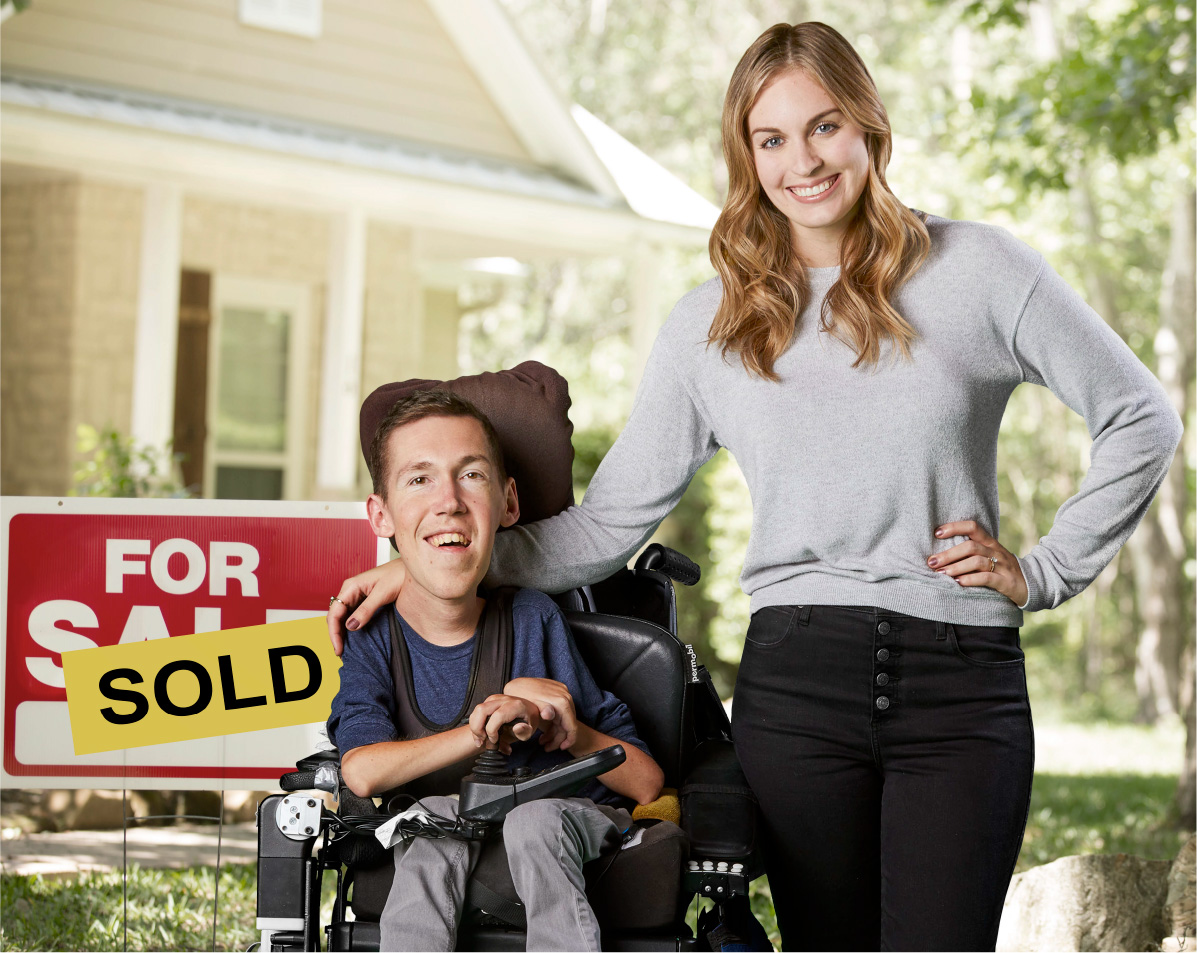Shane & Hannah
Home sweet home

During our speaking engagements at elementary schools across the country, a common question we get asked by inquisitive, young minds is: “What do you do if your house has steps?”
“We love this question, because it shows that the students are applying our message about accessibility to a centerpiece of their own lives, the house they live in.”
We don’t need to belabor an obvious fact – accessible housing is rare and difficult to find – but as Hannah and I have just purchased our first home together, we wanted to discuss a few of our observations (and tips!) from throughout this experience.
A frustrating part for me was that I couldn’t accompany Hannah to many of the open houses, due to inaccessibility. We entered the home-buying process with the assumption that at least some adaptations would need to be made to make our future home accessible, so we didn’t limit ourselves by only seeing perfectly accessible houses. The unfortunate effect of this decision was that we looked at many places with 3+ steps at every entrance.
We counteracted this issue in several ways. Sometimes, Hannah would attend the showing by herself (or with her mom!). Hannah made sure to take lots of photos and videos so she could share them with me afterwards. Another option was to have our real estate agent do a “virtual” tour for us. Using a video call on his phone, our agent walked through every room while we watched from the comfort of our apartment. With his video tour and his tips about the pros and cons of every room, it was just like doing an open house in person.
If possible, I’d also bring along my portable ramp to get inside as many of the prospective homes as I could. I enjoyed this method the best, but all three options gave us a great sense of our choices.
With a disease like SMA, requirements for a home are obviously going to vary from person to person, but here are some of the things we asked about and paid attention to when picking our first home:
- How much work needs to be done to make the front entrance accessible?
- If there’s a basement, is it a walkout or would we need to install an elevator/lift inside the home?
- We generally looked only at one-level homes. Multiple floors just mean a lot more work needs to be done to make it accessible.
- Were the rooms and doorways spacious enough to maneuver my wheelchair easily? In our first apartment, the hallway to our bedroom was so narrow that I scraped the doorway pretty much every time I entered it, which created a lovely, shrill screeching sound. Sorry neighbors!
- Since Hannah lifts me onto the toilet and into the shower right now, we paid close attention to the layout of the bathroom.
- An attached garage was pretty much a necessity for us, living in Minnesota where it snows 11 months of the years (at least it feels like). In the home that we eventually purchased, I can drive from inside our house into the garage and right into our van without ever going outside. In no small way, this feature is helping to keep me healthy, as I no longer need to spend time in the frigid cold/ice/snow getting into my van.
- Does it have a fireplace? This one has nothing to do with accessibility. I just really wanted a fireplace.
“Buying a home is a stressful process for everyone. We did our best to have fun with it, and to remind ourselves that – stressful as it may have been – it was also exciting!”